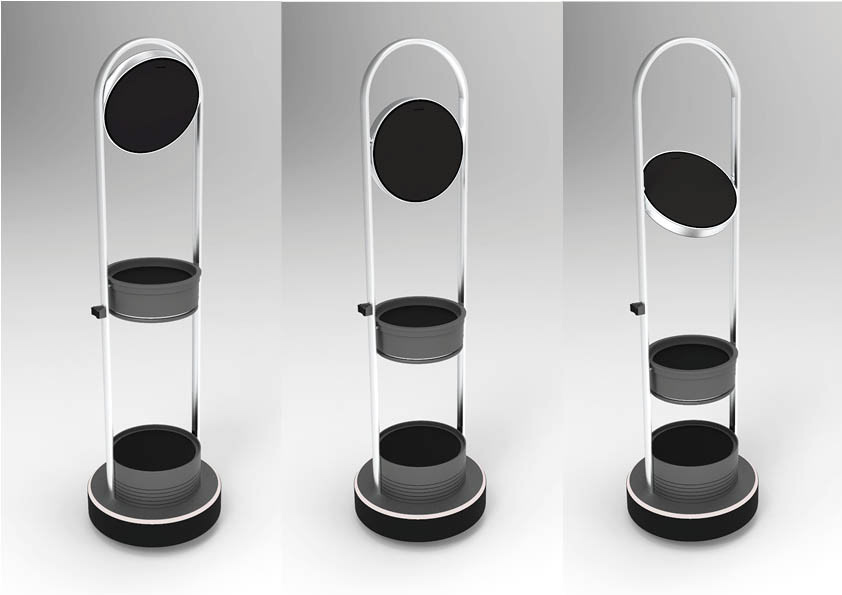Age brings some challenges. A lot of things don't go as smoothly as before and so many seniors have to move to nursing homes even if they would rather live at home. Demographic change will ensure that more and more people are affected by these problems. Although robots to help seniors have been developed since the 1980s, most robots have not yet made it to the end user. This is not only due to technical challenges, but also due to the lack of acceptance among users. Acceptance depends on many factors, one of which is aesthetics. As part of my BA thesis at the FHWN HGK at the Institute of Industrial Design, it was important to me to design a robot that would be accepted as widely as possible.

Through a literature study, I worked out characteristics that cause fears, expectations and desires in seniors, their relatives, and carers, and which thus may have a positive or negative impact on acceptance. Using an online survey, I was able to determine which design aspects trigger the perception of the characteristics relevant to acceptance. In the survey, 179 participants evaluated images of existing robots, rating them according to the characteristics I identified. The evaluation of the survey yielded design guidelines that should improve acceptance of the robot among seniors. I discovered the set of functions that the robot should implement through an age simulation, trying to recreate the perspective of seniors for myself. I was able to determine the required dimensions using an ergonomic model which I tested on different body sizes. Finally, sketches, small models and CAD drawings led me to my final design of MAÏ.

MAÏ supports seniors in their homes and helps them to live autonomously for as long as possible.
The robot provides easy-to-use video telephony, reminds of medication and important appointments, has smart home integration and facilitates care by doctors or health services via telemedicine. An associated bracelet is able to initiate emergency calls and can detect if the user has fallen. In an emergency, MAI can assist health authorities by moving near the site of the incident and transmitting footage or sound. Using storage areas on the middle module and the base, MAÏ can also transport objects that have been placed on it.

MAÏ is a mobile, semi-autonomous robot that is operated via touchscreen, gestures and voice control. The screen and the middle module can be adjusted in height thanks to motorized guide rails embedded in the frame. The screen can also tilt and it adjusts its height and angle constantly to the user's head for optimal ergonomic use. The middle module consists of a shelf and a removable tray. A drawer for medication and reading glasses is connected to the shelf by a by a barrel on its inner side. The drawer is illuminated and opens by rotating outwards. The robot moves on a system of wheels consisting of two drive wheels and four freely moving trailing wheels with integrated shock absorbers. With the wheel system and additional sensors, MAÏ can overcome doorsteps and carpet edges. Of course, the robot also has a charging station, into which it retires as soon as the user leaves the house or goes to bed. A red pulsing LED ring around the base indicates if the battery level is low.



